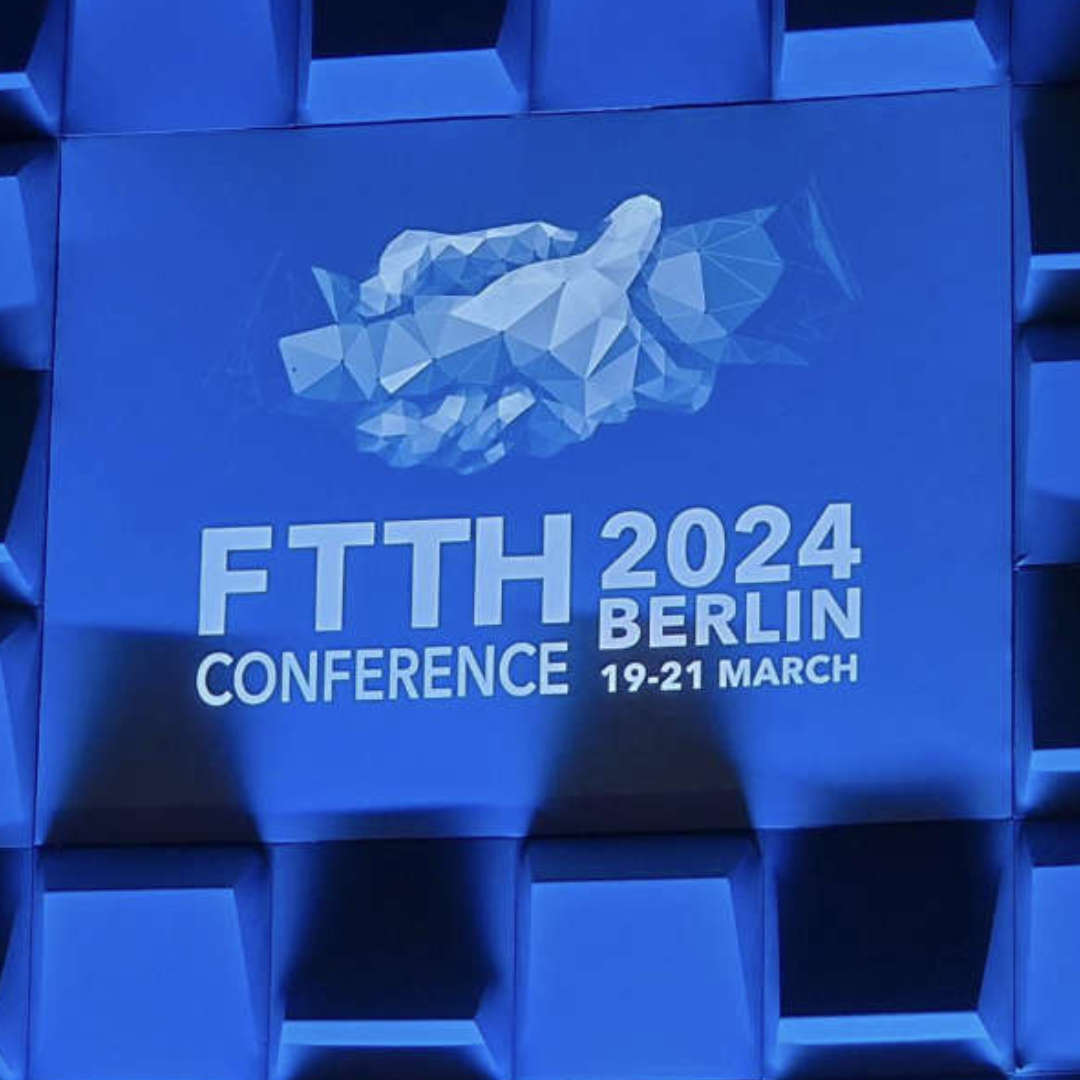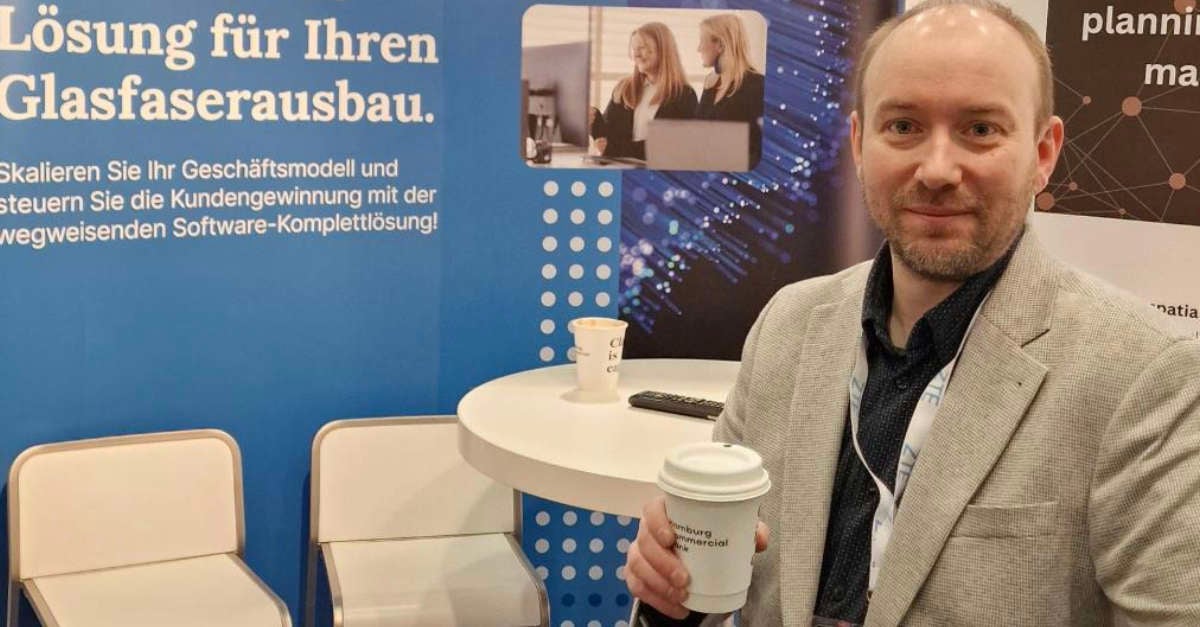
Hello there, Ulf Engstrand here. Recently, I had the chance to attend the FTTH Conference in Berlin. It was an insightful event, filled with discussions and debates on the latest trends and challenges. I am excited to share my key findings with you.

One of the key takeaways is the (still ongoing) problem to achieve acceptable uptake rates. The key selling points to consumers are symmetric speeds > 250Mbit, reliability, latency, and future-proofing. As an example, VR seems a little disconnected from reality.
The big "elephant in the room" is that most people are quite happy with their VDSL, which offers speeds up to 250/40 Mbit and OK reliability unless you are a family with greater demands.
So, drastic changes are required to overcome this and meet the EU 2030 Gigabit goal.
Massive marketing – Communicating the advantages of fiber with real benefits - why it this is important for the future and what are the future services offered. Wholesale can enable marketing at big scales and presented as the way to reach the other 50%.
Price – ISPs cannot continue discounting copper access. Households without high demands (children's gaming, watching videos, streaming, etc.) simply don't have the incitement to upgrade their connection. They will need to see that the price is at least comparable.
Demand Creation over demand aggregation. Customer satisfaction is key to getting the word going in the community. Therefore, excellent installation, service reliability, and customer support are essential.
2030 goals seem distant – time for an EU 2030 copper ban?! For sustainability reasons?!
XGS-PON in Focus
-
Keywords are sustainability, bandwidth, and reliability.
-
Up to 18 times more energy efficient than P2P
-
The passive characteristics make it more reliable à, fewer faults à, and higher customer satisfaction.
-
The adoption of XGS-PON is rather slow and low. Many operators in Germany and elsewhere have other concerns, like achieving acceptable uptake rates.
-
The talks about the next-gen 10/25/50 Gbit PON networks seem slightly disconnected from reality.
Low Uptake Rates
-
The uptake rate is a concern in many countries - often significantly lower than homes passed, <50%
-
In addition, the uptake rate vs homes passed does not seem to increase year-to-year.
-
Why? People, in general, are quite happy with their VDSL offering speeds up to 250/40 Mbit and OK reliability.
-
Consumers are unwilling to pay more - 30 to 50% lower price compared to fiber (even though the public tariffs show equally priced products)
-
In addition, struggling with finding right skills (installation and civil works represents >60% and >300 000 workers missing in Germany)
Maximize ARPU
- Building a successful fiber business is all about maximizing ARPU by the end of the day – think long-term.
- Firstly, maximize uptake rates.
- Overbuilding is a big problem, so use the first mover advantage.
- Some major telcos like BT and DT intend to overbuild regardless.
- Acquisition and consolidation will eventually happen, which can boost the uptake rates. Many operators will not even get back their investment, so it can be cheaper to acquire than to build yourself (we see this now in the UK).
- Secondly, ensure the operational costs don't increase after 5-6 years. How?
- Using energy efficiency sustainable technology, automation, network consolidation, standardized integrations, and modern IT infrastructure
- Advancements and changes in the marketplace very much drive future operational and maintenance costs. Prepare for the future.
- Standardization: This is why cloud, ODA, TMF, NETCONF/YANG, network consolidation, and other standards are becoming increasingly important to win the race.
Network Consolidation
-
Many vendors are starting to provide consolidated solutions for the access side.
-
Combining BNG, edge routers, and other access hardware into single function
-
Fewer things that can fail, simpler to operate and provision, less energy consumption, etc.
Customer Experience
-
Everything that affects the customer's perception of the company and brand, including delivery, quality of service, support, etc.
-
Focus on the network side (reliability, speed, failure detection, problem resolution, etc.). Distinct to TMF where business processes and standardization are more in centre (obviously).
-
First Time Right – the build-out process is a key topic (obviously)
-
Have you restarted your router? Great concern about what is going on inside the customer's home. Why?
-
Customers often judge the performance of the service from speed tests.
-
The Broadband Dilemma: Higher expectations with higher speeds. Higher speeds cause more Wi-Fi-related issues -> More dissatisfied customers.
-
This is a big problem for ISPs, emphasizing the need for efficient troubleshooting tools, signal reading and probing tools, fault analysis and correlation to early detect where the problem is.
Wholesale Standardization
-
The industry is struggling with the standardization of the wholesale broadband business. The Swedish Open Access model is sometimes referred to as a leading example that can inspire and be used to accelerate wholesale adoption in Germany and other markets. While this is true, it is also clear that the Swedish model sometimes oversimplifies the business by international standards, which often include many aspects that we never had to consider in Sweden.
-
Unfortunately, too few words were mentioned about the ongoing API standardization projects led by TM Forum (Standardizing Wholesale Broadband) and AK S&P FIT (Fixnet Interfaces go TM Forum). Given that these projects aim to address these exact challenges and have already garnered support from a wide range of operators and ISPs such as Vodafone, DT, BT, City Fibre, and 1&1, one would have expected them to receive more attention on stage.
-
This emphasizes the need to work even harder to reach out with the message about these ongoing standardization projects and involve leading fiber operators and ISPs of various sizes in these projects. If you are going to build a standard that attracts and is practically doable for smaller/medium-sized ISPs, complexity needs to be carefully weighed against simplicity, lowering the thresholds for wide adoption across all markets. Over-complication will add the risk of benefiting the larger players and the risk of dual API standards.
-
Our role: As a leading vendor with over 20 years of experience in enabling successful wholesale fiber businesses, Netadmin will play a crucial role in both simplifying the adoption of TMF standards and leveraging our influence within these projects to address the needs of lower-tier ISPs and operators.
Technology
-
AI was not a big topic, which was a bit surprising.
-
TM Forum: Not so much mentioned on stage, but it was discussed quite frequently on the floor.
-
WiFi 7: Lots of products were showcased in the booths.
-
Virtualization and Whiteboxing: Virtualized BNGs, Routers, and Whitebox OLTs (hardware and software components are decoupled).
Thank you for taking the time to read! - Ulf Engstrand
 For more information, please contact
For more information, please contact
Ulf Engstrand, Senior Product Manager.
Email: ulf.engstrand@netadminsystems.com




